
On the first floor exhibition room we will have recent works of Master Hugo Zapata. His sculpture stands out particularly for its formal relationships with topography, as Monsalve and Alzate’s work does, where once a material taken from the earth is recreated through other natural materials such as rock, stone, marble, slate; combined with iron and glass, and manipulated and worked with machinery and technology that, through cuts and grouping, he transforms stone and slabs into geometric shapes revealing textures and oxidation's.
Orbes (Orbs) and Radicantes (Radicants) proposes a dialogue between the artists Edwin Monsalve and Fredy Alzate, in which cartography is assumed as a model for critical thinking to configure intersections and fugues, where possible universes are modeled referencing the micro and the macro, through igniting more abstract notions of the Universe we inhabit. This exploration seeks to connect signs that have been in Alzate’s different research and creative projects, where precarious forms and ephemeral installations respond to an analysis of what is real, of strategies to occupy spaces and the possible dimensions that define inhabiting places, but also to the configuration of subjectivity in specific contexts and acts of translation. Alejandro Garcia Restrepo explores the coexistence between nature and human through his drawings. The artist questions notions of beauty by merging animal and human elements to represent the indivisibility of body and soul. As the international guest we have Galeria Fernando Pradilla from Madrid, which brings Non Piangere, the latest project of the Spanish artist Juan Francisco Casas, which is based on the work of the Baroque painter Artemisia Gentileschi to develop his own reflection on the female body and its nature.
Galeria El Museo opened in 1987 in Bogotá, Colombia as a project aimed to develop and promote the Colombian art market locally and internationally, through representing artists, collaboration’s with other galleries, museum exhibitions and participation in international art fairs. Galeria El Museo’s represented artists are periodically selected based on their contributions to the development of the visual arts. In 2001 Galeria El Museo opened Galeria Fernando Pradilla in Madrid to build a bridge between the Latin American, Spanish and European art scenes. Galeria El Museo has represented throughout its history major international artist such as Fernando Botero, Alejandro Obregón, Débora Arango, Luis Caballero, Carlos Rojas, Nadin Ospina and many others
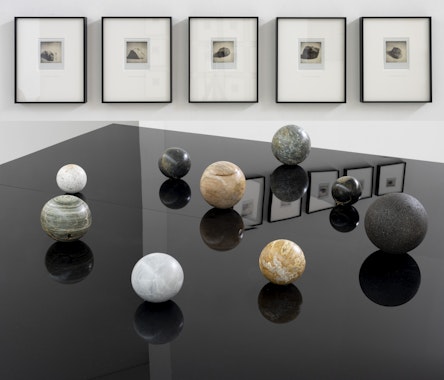

The Orbes (Orbs) project comes from a constant and attentive look on the concept of landscape. The project Horizonte Vertical (Vertical Horizon, 2019) is a close precedent, which referred to the Universe through paradoxical images configured by a magnetic action on the plane, as a sign that alludes to gravity, projecting from the representation, fiction as a simile of reality, in a formal mesh of points of light and superimposed magnetized objects. In Orbes (Orbes), this ambiguous relationship between the macro and the micro continues, renewing the gestures from practices derived from the scientific method, using its ways of seeing and classifying, which serve to describe the origin of everything, including the forms of nature itself. Thus, through friction, processes of addition and subtraction arise, in a cyclical gesture, which models both three-dimensional and two-dimensional forms. The visual references displayed, although they take us to the Universe understood as the totality that contains us, also refers to a primitive place, where materialities that contain ontological stories underlie.
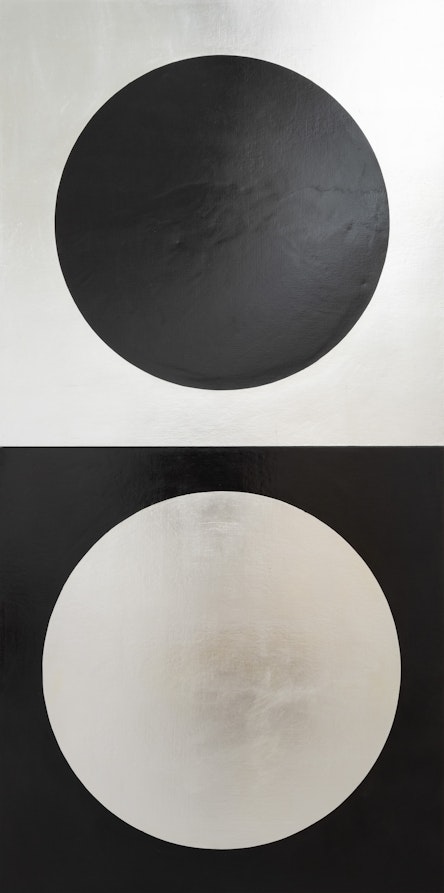
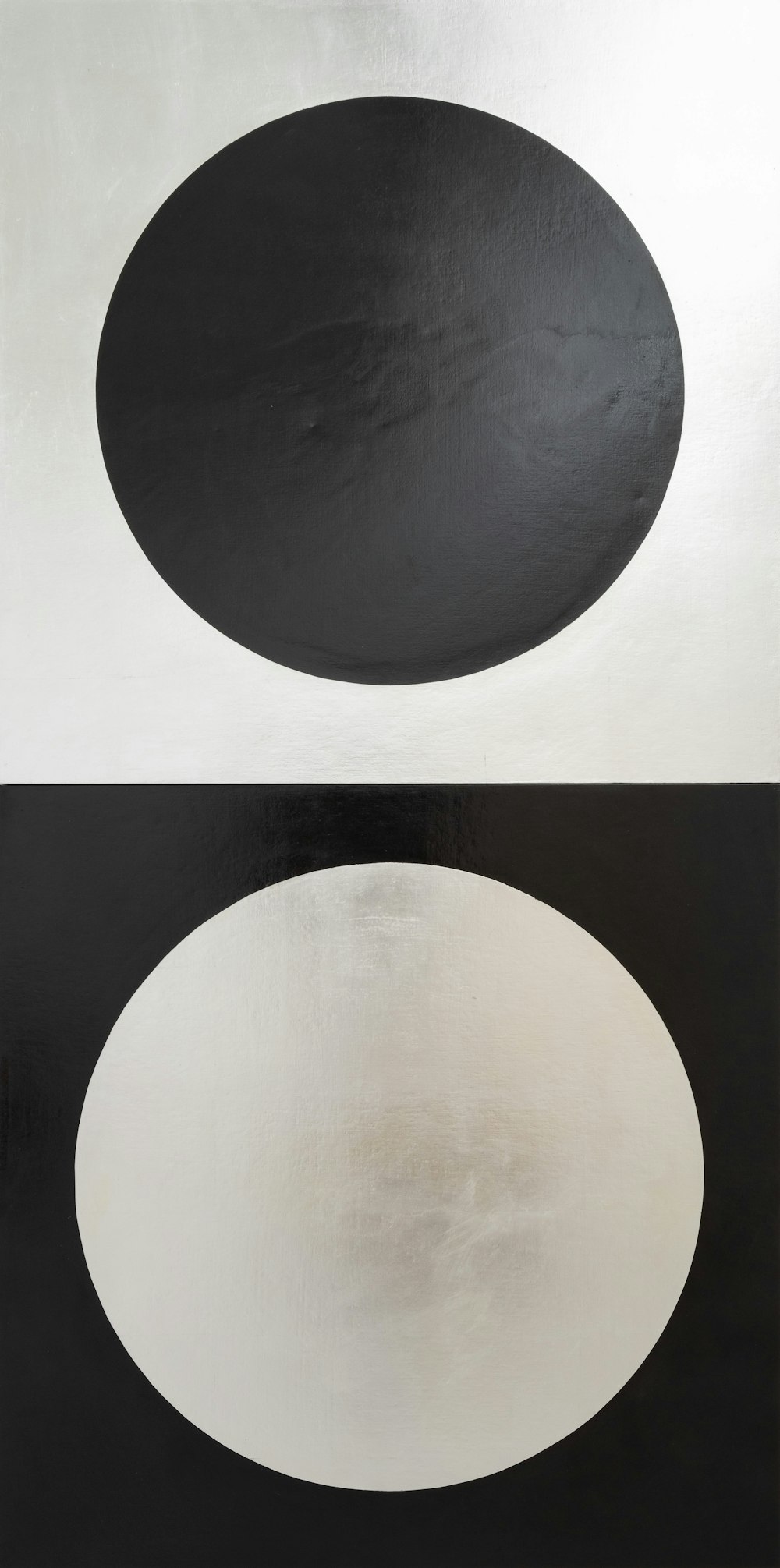
The Orbes (Orbs) project comes from a constant and attentive look on the concept of landscape. The project Horizonte Vertical (Vertical Horizon, 2019) is a close precedent, which referred to the Universe through paradoxical images configured by a magnetic action on the plane, as a sign that alludes to gravity, projecting from the representation, fiction as a simile of reality, in a formal mesh of points of light and superimposed magnetized objects. In Orbes (Orbes), this ambiguous relationship between the macro and the micro continues, renewing the gestures from practices derived from the scientific method, using its ways of seeing and classifying, which serve to describe the origin of everything, including the forms of nature itself. Thus, through friction, processes of addition and subtraction arise, in a cyclical gesture, which models both three-dimensional and two-dimensional forms. The visual references displayed, although they take us to the Universe understood as the totality that contains us, also refers to a primitive place, where materialities that contain ontological stories underlie.
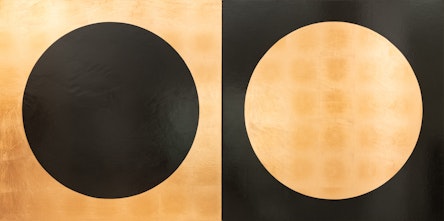

The Orbes (Orbs) project comes from a constant and attentive look on the concept of landscape. The project Horizonte Vertical (Vertical Horizon, 2019) is a close precedent, which referred to the Universe through paradoxical images configured by a magnetic action on the plane, as a sign that alludes to gravity, projecting from the representation, fiction as a simile of reality, in a formal mesh of points of light and superimposed magnetized objects. In Orbes (Orbes), this ambiguous relationship between the macro and the micro continues, renewing the gestures from practices derived from the scientific method, using its ways of seeing and classifying, which serve to describe the origin of everything, including the forms of nature itself. Thus, through friction, processes of addition and subtraction arise, in a cyclical gesture, which models both three-dimensional and two-dimensional forms. The visual references displayed, although they take us to the Universe understood as the totality that contains us, also refers to a primitive place, where materialities that contain ontological stories underlie.
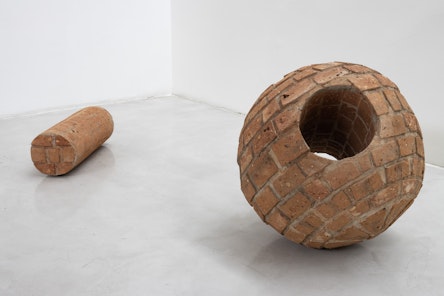
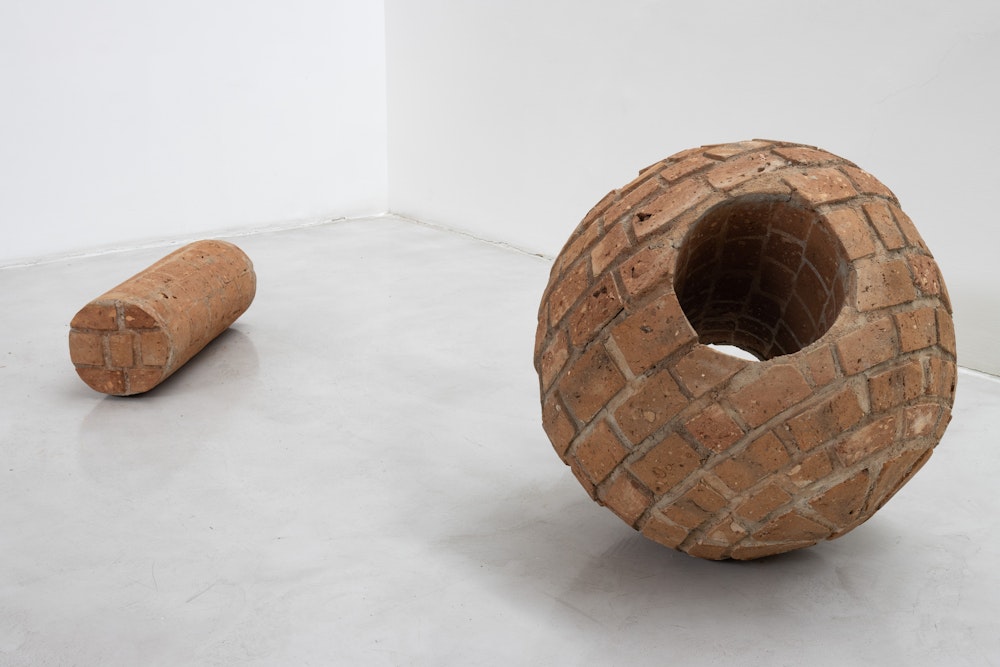
In turn, the Radicantes (Radicants) project proposes an open story about heterogeneous structures and modes of relationship of the parts that constitute them, through a fragmentary and vagrant visual narrative which, in Nicolás Bourriaud's terms, allows us to recognize and transit territories of significance, valuing the installation of a radicant subject in a context that ends up defining it through the lens of contemporary aesthetic thinking. Attention to the itineraries, in the crossing of signs, provides a narrative instance that metaphorically infers contingent situations that come from urban contexts, but that from the segment are projected suspended in a pictorial void, alluding to uncertain landscapes, where things can remain or collapse by a chaotic development. This exploration seeks to connect signs that have been present in the different investigations and creative projects of Alzate, where precarious forms and ephemeral installations respond to an analysis of reality, of strategies to occupy spaces and the possible dimensions that define inhabiting places, but also, to the configuration of subjectivities from experiences in specific contexts and acts of translation.

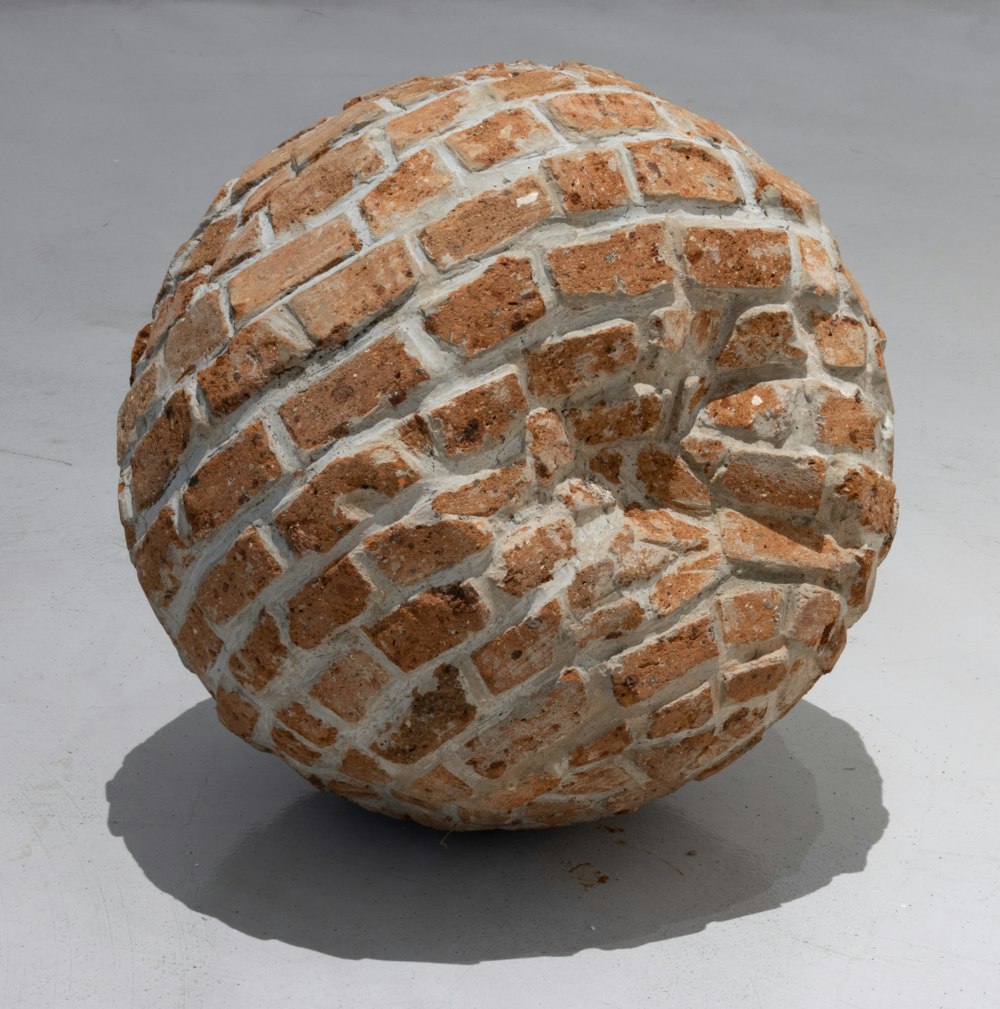
In turn, the Radicantes (Radicants) project proposes an open story about heterogeneous structures and modes of relationship of the parts that constitute them, through a fragmentary and vagrant visual narrative which, in Nicolás Bourriaud's terms, allows us to recognize and transit territories of significance, valuing the installation of a radicant subject in a context that ends up defining it through the lens of contemporary aesthetic thinking. Attention to the itineraries, in the crossing of signs, provides a narrative instance that metaphorically infers contingent situations that come from urban contexts, but that from the segment are projected suspended in a pictorial void, alluding to uncertain landscapes, where things can remain or collapse by a chaotic development. This exploration seeks to connect signs that have been present in the different investigations and creative projects of Alzate, where precarious forms and ephemeral installations respond to an analysis of reality, of strategies to occupy spaces and the possible dimensions that define inhabiting places, but also, to the configuration of subjectivities from experiences in specific contexts and acts of translation.

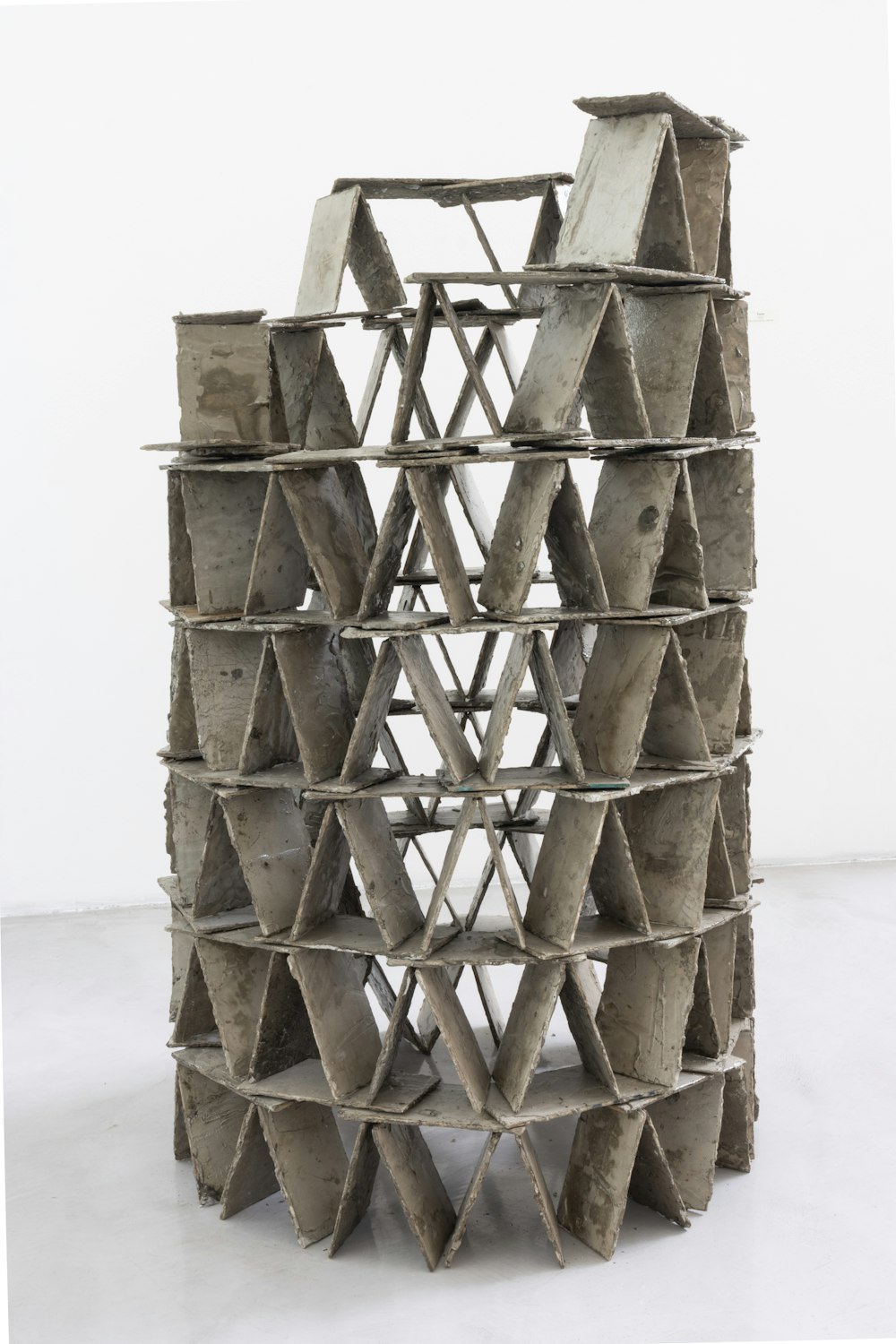
In turn, the Radicantes (Radicants) project proposes an open story about heterogeneous structures and modes of relationship of the parts that constitute them, through a fragmentary and vagrant visual narrative which, in Nicolás Bourriaud's terms, allows us to recognize and transit territories of significance, valuing the installation of a radicant subject in a context that ends up defining it through the lens of contemporary aesthetic thinking. Attention to the itineraries, in the crossing of signs, provides a narrative instance that metaphorically infers contingent situations that come from urban contexts, but that from the segment are projected suspended in a pictorial void, alluding to uncertain landscapes, where things can remain or collapse by a chaotic development. This exploration seeks to connect signs that have been present in the different investigations and creative projects of Alzate, where precarious forms and ephemeral installations respond to an analysis of reality, of strategies to occupy spaces and the possible dimensions that define inhabiting places, but also, to the configuration of subjectivities from experiences in specific contexts and acts of translation.


He studied at the Institute of Plastic Arts of the University of Antioquia (1963-1966), architecture at the National University of Colombia, Medellín (1972). He is part of the generation of urban artists that arose in Medellín in the 1970s. He is the Founder of the Visual Arts degree at the National University of Colombia, Medellín. His first steps on organic abstraction graphics projected him to organic abstract sculpture and, from there, to discover the wonders of nature in fossils, stones and rocks, which he ably manipulates. The black stone (shale) and iron oxides were revealing formal possibilities that, after being subjected to rational and technical procedures (cuts and caresses), began to reveal its hidden mysteries. His passion and obsession with geology in general lead him to an encounter with water. Rock and water intersect to configure his craft within the realm of the sacred. He has exhibited in solo and group shows since 1975 in Colombia, Chile, Argentina, Mexico, Puerto Rico, Cuba, Brazil, England, the United States, among other countries. In 1989 he was awarded the Prize of the XXXII National Salon of Colombian Artists, Cartagena.


He studied at the Institute of Plastic Arts of the University of Antioquia (1963-1966), architecture at the National University of Colombia, Medellín (1972). He is part of the generation of urban artists that arose in Medellín in the 1970s. He is the Founder of the Visual Arts degree at the National University of Colombia, Medellín. His first steps on organic abstraction graphics projected him to organic abstract sculpture and, from there, to discover the wonders of nature in fossils, stones and rocks, which he ably manipulates. The black stone (shale) and iron oxides were revealing formal possibilities that, after being subjected to rational and technical procedures (cuts and caresses), began to reveal its hidden mysteries. His passion and obsession with geology in general lead him to an encounter with water. Rock and water intersect to configure his craft within the realm of the sacred. He has exhibited in solo and group shows since 1975 in Colombia, Chile, Argentina, Mexico, Puerto Rico, Cuba, Brazil, England, the United States, among other countries. In 1989 he was awarded the Prize of the XXXII National Salon of Colombian Artists, Cartagena.

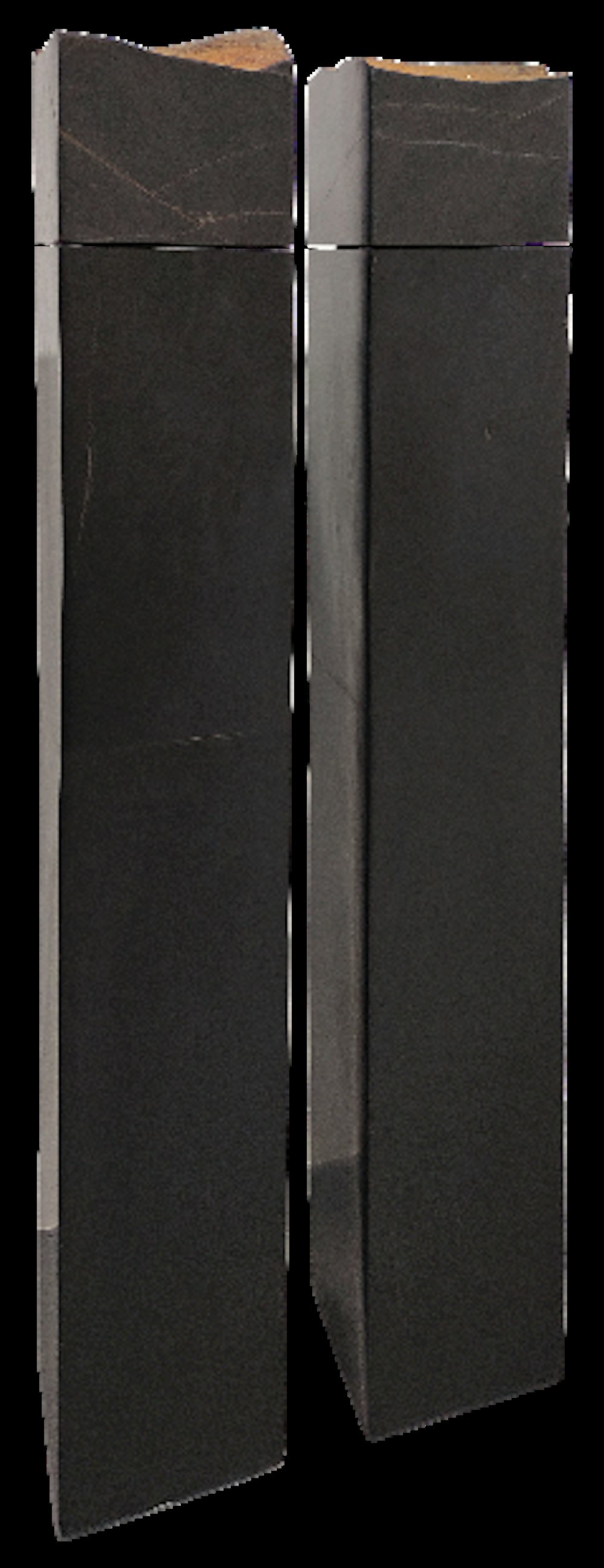
He studied at the Institute of Plastic Arts of the University of Antioquia (1963-1966), architecture at the National University of Colombia, Medellín (1972). He is part of the generation of urban artists that arose in Medellín in the 1970s. He is the Founder of the Visual Arts degree at the National University of Colombia, Medellín. His first steps on organic abstraction graphics projected him to organic abstract sculpture and, from there, to discover the wonders of nature in fossils, stones and rocks, which he ably manipulates. The black stone (shale) and iron oxides were revealing formal possibilities that, after being subjected to rational and technical procedures (cuts and caresses), began to reveal its hidden mysteries. His passion and obsession with geology in general lead him to an encounter with water. Rock and water intersect to configure his craft within the realm of the sacred. He has exhibited in solo and group shows since 1975 in Colombia, Chile, Argentina, Mexico, Puerto Rico, Cuba, Brazil, England, the United States, among other countries. In 1989 he was awarded the Prize of the XXXII National Salon of Colombian Artists, Cartagena.
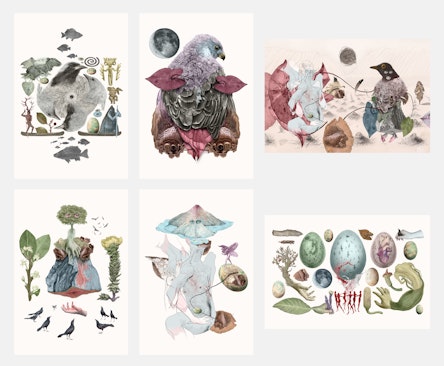

In my most recent explorations, the coexistence between the natural and the human is a theme that has been taking shape. Culturally, a difference has been drawn between the two. Beauty is something that has always been talked about a lot, without anyone ever reaching any consensus. These images do not pretend to give a definitive answer, rather they try to illustrate the enigma. But if we simply describe the elements that compose them, the mysterious and the ambiguous will come to the fore: Is she a woman with the head of a bird? Is it a bird with a woman's body? In short, it is something outside of any conventional canon. The heart, that metaphysical place within, where we keep our passions, desires and feelings, reveals itself to us as a throbbing organ. And the song, the supernatural voice that this being emits, is the sweetest melody anyone can imagine. In these images I explore the idea of the natural and the human, the soul and the body, as two indivisible substances.


In my most recent explorations, the coexistence between the natural and the human is a theme that has been taking shape. Culturally, a difference has been drawn between the two. Beauty is something that has always been talked about a lot, without anyone ever reaching any consensus. These images do not pretend to give a definitive answer, rather they try to illustrate the enigma. But if we simply describe the elements that compose them, the mysterious and the ambiguous will come to the fore: Is she a woman with the head of a bird? Is it a bird with a woman's body? In short, it is something outside of any conventional canon. The heart, that metaphysical place within, where we keep our passions, desires and feelings, reveals itself to us as a throbbing organ. And the song, the supernatural voice that this being emits, is the sweetest melody anyone can imagine. In these images I explore the idea of the natural and the human, the soul and the body, as two indivisible substances.

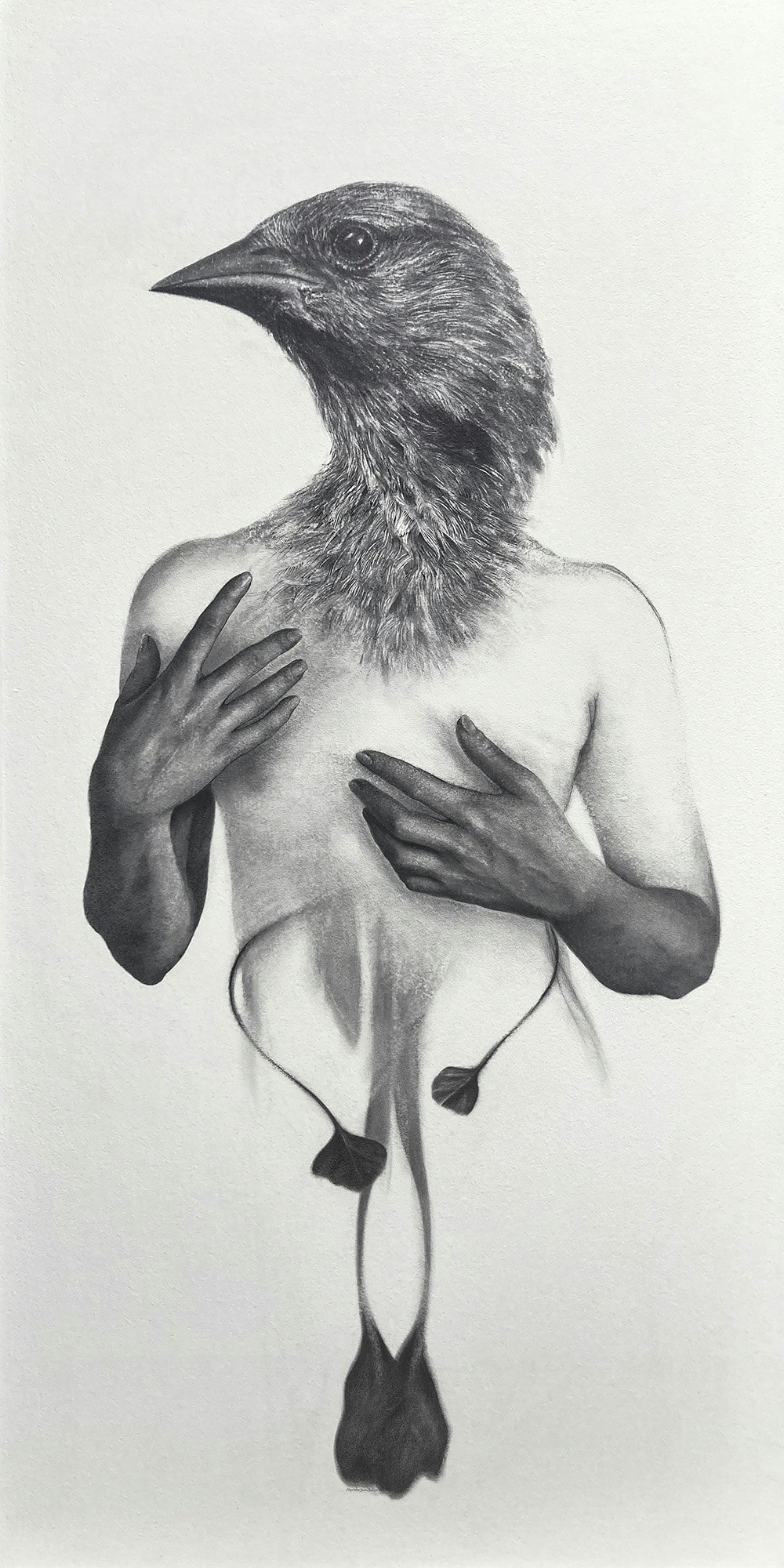
In my most recent explorations, the coexistence between the natural and the human is a theme that has been taking shape. Culturally, a difference has been drawn between the two. Beauty is something that has always been talked about a lot, without anyone ever reaching any consensus. These images do not pretend to give a definitive answer, rather they try to illustrate the enigma. But if we simply describe the elements that compose them, the mysterious and the ambiguous will come to the fore: Is she a woman with the head of a bird? Is it a bird with a woman's body? In short, it is something outside of any conventional canon. The heart, that metaphysical place within, where we keep our passions, desires and feelings, reveals itself to us as a throbbing organ. And the song, the supernatural voice that this being emits, is the sweetest melody anyone can imagine. In these images I explore the idea of the natural and the human, the soul and the body, as two indivisible substances.

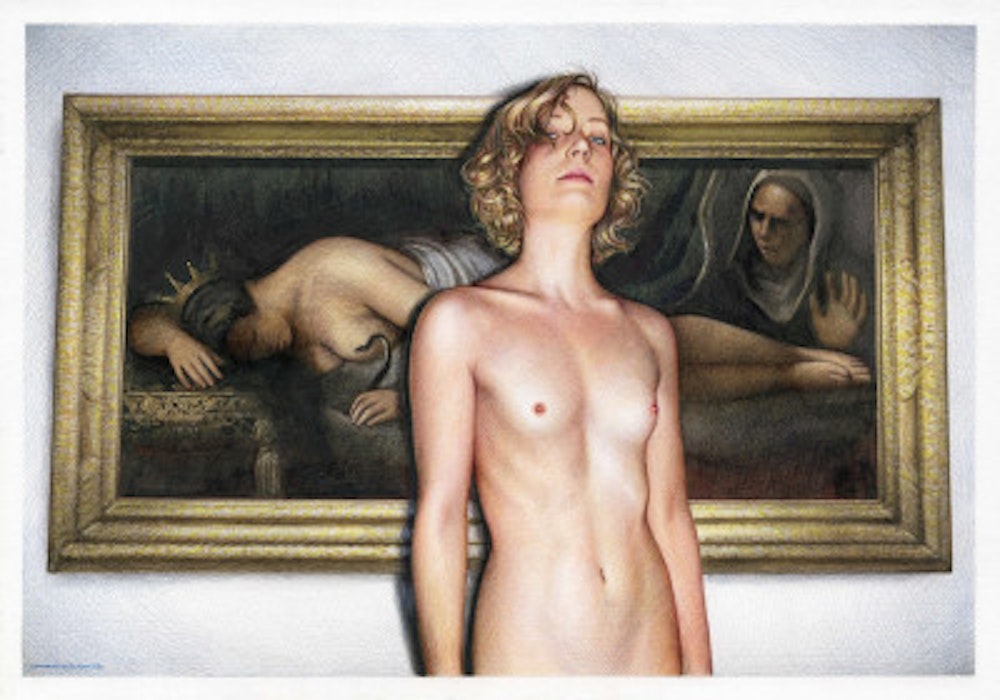
This is a project inspired by the baroque painter Artemisia Gentileschi, in which the iconic works of the artist serve as a pretext for Casas to develop his characteristic iconography around the female body and its nature. The body as a place of political and social reflection where the viewer is confronted from the standpoint of his own idiosyncrasy.

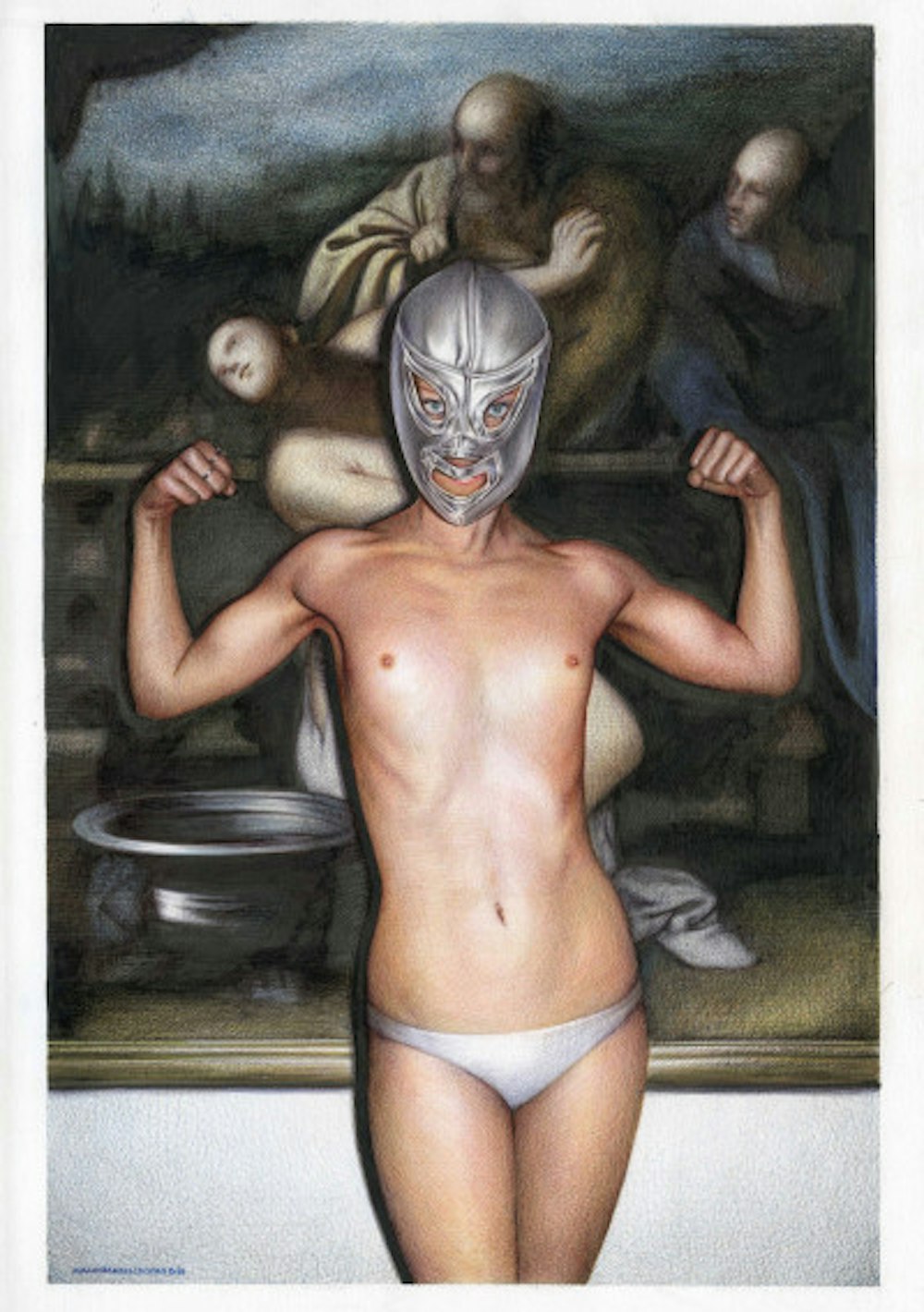
This is a project inspired by the baroque painter Artemisia Gentileschi, in which the iconic works of the artist serve as a pretext for Casas to develop his characteristic iconography around the female body and its nature. The body as a place of political and social reflection where the viewer is confronted from the standpoint of his own idiosyncrasy.
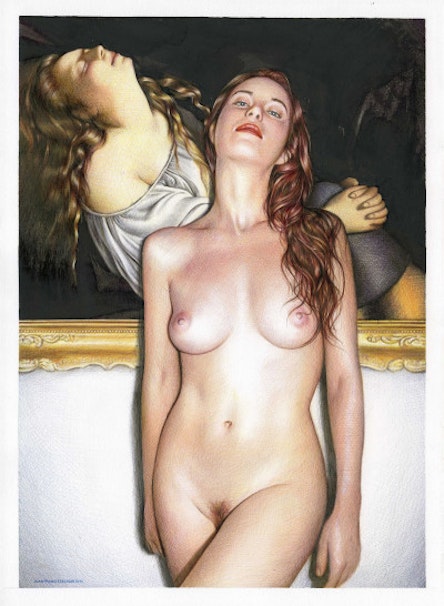
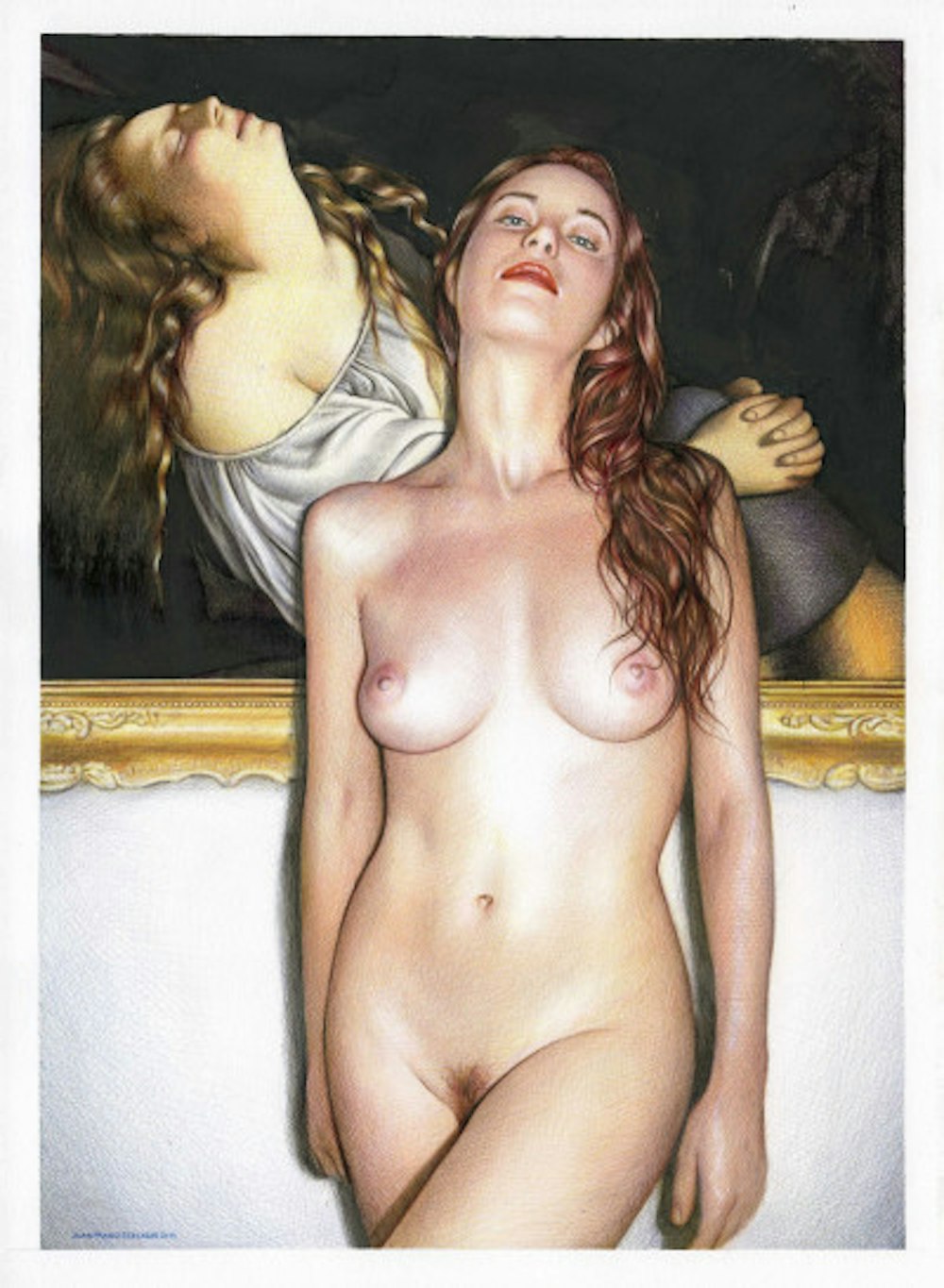
This is a project inspired by the baroque painter Artemisia Gentileschi, in which the iconic works of the artist serve as a pretext for Casas to develop his characteristic iconography around the female body and its nature. The body as a place of political and social reflection where the viewer is confronted from the standpoint of his own idiosyncrasy.